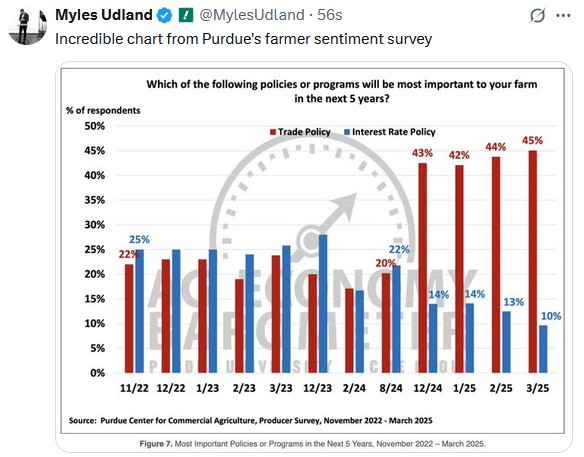Moody’s downgrades Senegal to Caa1 amid rising debt concerns
Yesterday’s Commentary discussed the vast divergence in the economic sentiment of Democrats versus Republicans. In the piece, we wrote: “Democrats think today’s economic outlook is worse than during the peak of Covid and the financial crisis of 2008. Sentiment is tricky to convert into an economic forecast. Sometimes, sentiment is bad, but consumers continue to spend. Other times, sentiment dictates consumption habits.” Given the current sentiment gap, we can lean on personal savings as another sentiment gauge to help better guide our forecasts.
The old saying “Put your money where your mouth is” may be most helpful when politics significantly impacts sentiment, as it is today. When asked in a survey, it’s easy to claim financial conditions are worse than in March 2020 or October 2008. However, are those same consumers taking financial precautions as they did during those periods? Saving money, i.e., consuming less, is such a precaution. The graph below shows that the personal savings rate is still very low and does not indicate that consumers are saving more. While that can change rapidly, as we saw in 2020, personal savings do not reflect the same negative sentiment as many surveys do.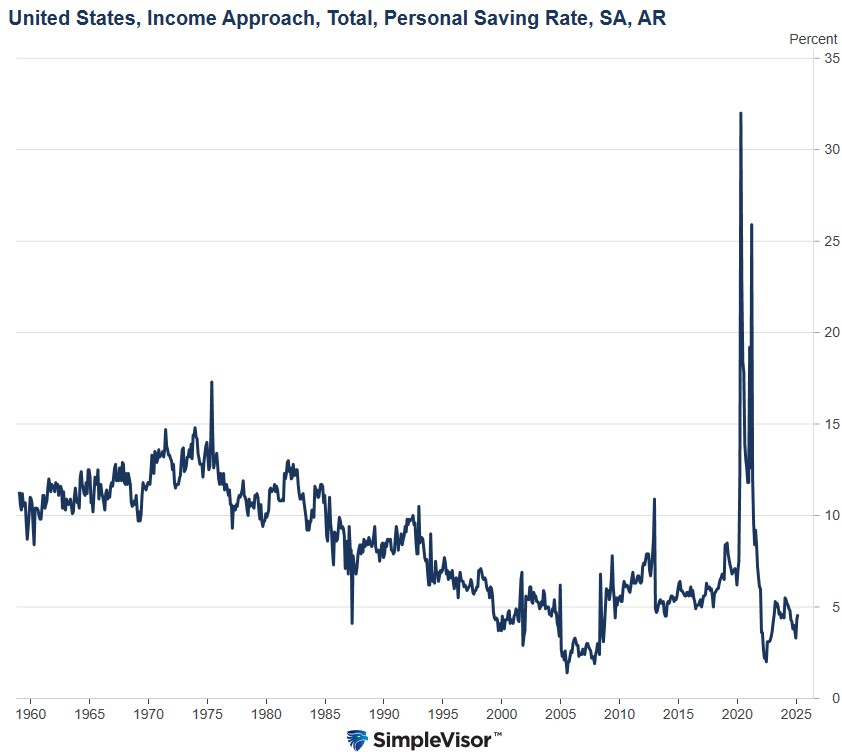
Market Trading Update
Yesterday, we discussed that hedge funds had been aggressively selling Technology stocks, and exposure levels to the market had fallen quite sharply. However, despite the correction and excess negative sentiment, there was little sign of financial stress, particularly in credit spreads.
However, today is “Liberation Day,” and the markets will finally learn what tariffs will be, who will be impacted the most, and what to expect for earnings in the future. The market could sell off somewhat if tariffs are more aggressive than anticipated. However, if tariffs are inline or potentially less than expected, such could lead to an outsized near-term rally, given the aggressive underweight of hedge funds and CTAs. As I noted on “X” yesterday: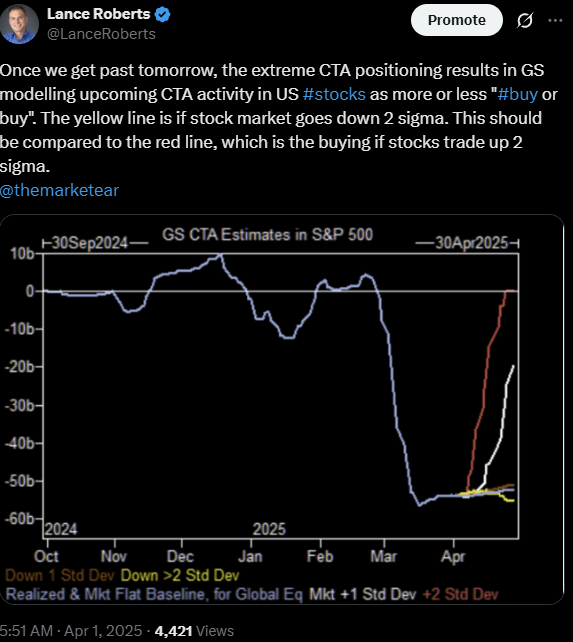
While we certainly expect a rally, that rally will likely be short-lived. Our weekly moving averages are getting very close to crossing over, which will provide tremendous resistance around 5800. Any rally toward those levels over the next month or two should be used to reduce risk, rebalance portfolios, and raise cash levels. Markets will likely struggle to move higher from that level.
As economic data weakens, we will likely see additional market weakness before forming a more lasting bottom.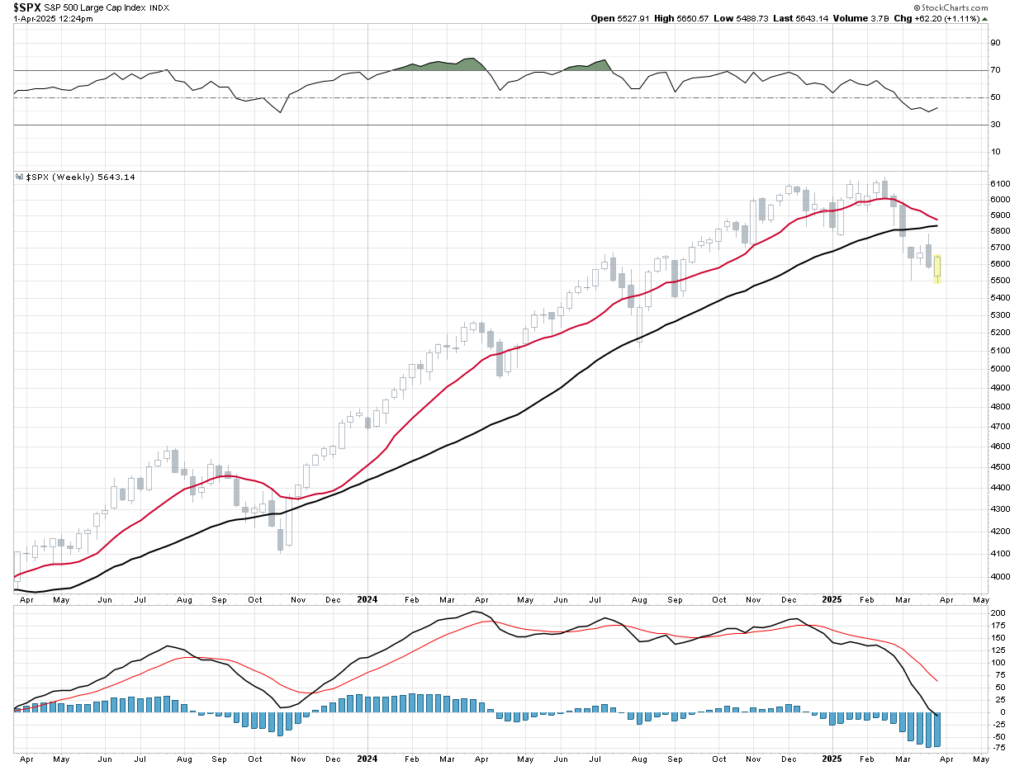
This outlook remains part of our ongoing thesis for this year of “Curb Your Enthusiasm.” Investors should expect increased levels of volatility as inflation remains sticky, a lack of monetary support weighs on economic growth, and earnings estimates are revised lower, which will require a repricing of valuations. As we concluded in that article:
“Investing in 2025 will require a blend of optimism and caution. With slowing economic growth, fiscal policy uncertainties, global challenges, overconfident sentiment, and ambitious earnings expectations, investors have plenty of reasons to approach the markets carefully. There will be a time to raise significant cash levels. A good portfolio management strategy will ensure exposure decreases and cash levels rise when the selling begins. Taking advantage of bullish advances while they last is essential. Just don’t become overly complacent, believing, “This time is different.” It likely isn’t.”
JOLTs & ISM Manufacturing
The number of job openings, per the JOLTs report, fell to a six-month low of 7.568 million. The job hires, quits, and layoffs rates remain low as shown below. They argue that the labor market is not very active. While the number of new hires remains low, few are quitting or being let go from jobs. Remember that the JOLTs report lags this coming Friday’s BLS employment report by a month. Thus, any sudden weakening in the employment picture due to government layoffs may not show in the latest JOLTs report.
The ISM manufacturing survey is back in economic contraction at 49, compared to 50.3 last month. Employment and new orders fell further, signaling that managers are growing concerned about the current environment. Prices paid rose again to 69.4, up almost five points from last month. This warns that manufacturers are growing anxious about tariffs and the prices they think they will have to pay for intermediate or final goods.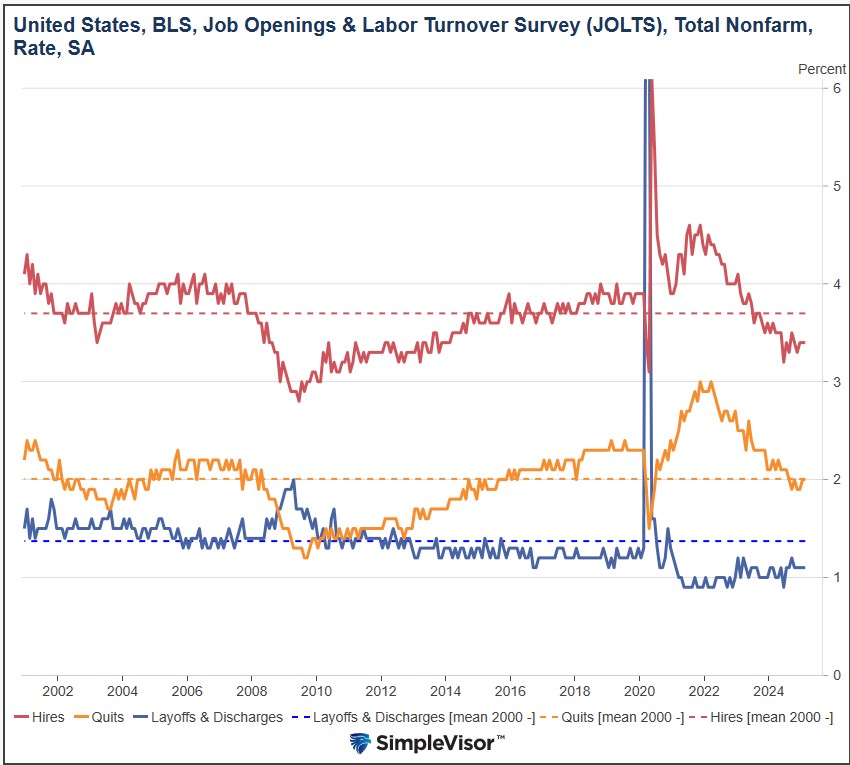
Failure At The 200-DMA
Historically, failures at the 200-DMA have elicited heightened concerns from investors. Technically speaking, “nothing good happens below the 200-DMA.” Still, over the last 30 years, previous failures at the 200-DMA have often been buying opportunities. That is unless some “event” of magnitude creates a massive shift in analysts’ estimates.
For this chart, I label “bear markets” as periods when the market fails the 200-DMA and repeatedly fails subsequent retests of that moving average. If the market fails at the 200-DMA and recovers shortly thereafter, it is considered a “correction.” As shown, during the first two “bear markets,” earnings fell sharply as the economy slowed and a recession took hold. Outside the brief “Covid” pandemic, earnings remain well anchored to ongoing economic growth. If the current failure at the 200-DMA is the beginning of a deeper market correction, we should see earnings estimates beginning to fall more quickly.
READ MORE..
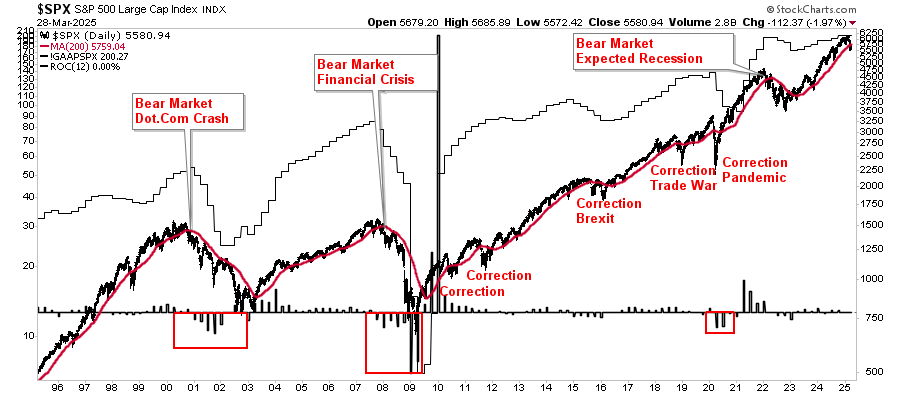
Tweet of the Day
